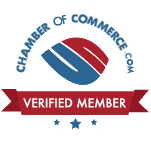
Enhance the health, structure, and aesthetics of your trees through expert tree pruning. This comprehensive guide offers tips and advice from tree professionals in Irvine to ensure your trees are cared for correctly. Learn the do’s and don’ts of tree pruning, common mistakes to avoid, and when it’s time to call in the experts.
Understanding the Importance of Tree Pruning
Proper tree pruning is integral for maintaining the health, structure, and appearance of your trees. This practice involves several techniques that should be adhered to, preventing possible tree damage.
Expert Tips for Pruning Your Trees
- Prune for Good Structure: Establishing a good structure in young trees prevents tree failure, limb breakage, and health issues in the long run. Pruning young trees ensures a robust structure, promoting health and longevity.
- Pruning Reduces Risk: Pruning reduces the risks associated with property trees. By removing weak or hazardous branches—those that are dead, diseased, or damaged—the likelihood of tree failure decreases.
- Prune for Clearance: Good pruning practices maintain safe distances from buildings, signs, parking spots, and other areas. By following standard tree clearance guidelines, you minimize future pruning needs, ensuring well-maintained and safe trees.
- Check for Needed Pruning After a Storm: Storms can cause damage to trees, making it necessary to assess your trees after a storm and prune any damaged or broken branches.
Common Pruning Mistakes to Avoid
- Don’t Top: Topping shocks trees into rapid regrowth and causes many problems such as tree starvation, weak branches, and large pruning wounds.
- Don’t Lions Tail: This practice creates bald branches with tufted ends, increasing breakage likelihood due to their heavier end weight. It also makes them prone to sunscald and bark damage.
- Avoid Over Pruning: It’s best to avoid removing more than 25% of a tree’s living canopy in a single season. Too much pruning can stress the tree and make it vulnerable to pest attacks.
- Don’t Prune Without a Good Reason: Only prune branches that are dead, damaged, diseased, or interfering with other structures.
- Don’t Prune a Newly Planted Tree for the First Year: The tree needs time to establish its root system before pruning.
Consulting with Certified Arborists
Choose a company that adheres to the American National Standards Institute (ANSI) A300 standard for tree pruning. This standard provides guidelines on the use of tools, cutting techniques, and pruning methods. The professionals from Burbank Tree Pros follow these standards closely to ensure high-quality service.
After-Storm Tree Pruning
Storms can significantly damage trees. Always assess your trees after a storm and prune any damaged or broken branches. Consult professionals if the damage is severe.
Concluding Remarks
Proper tree pruning requires knowledge and skills for effective and safe execution. This guide provides the basics, but when in doubt, always consult with certified professionals like Burbank Tree Pros. Remember, your trees contribute to your property’s beauty, and their health significantly impacts the environment.
Additionally, if you have a palm tree you’d like to prune yourself, check out our detailed guide on how to safely prune palm trees. Proper care leads to healthy, happy trees!

